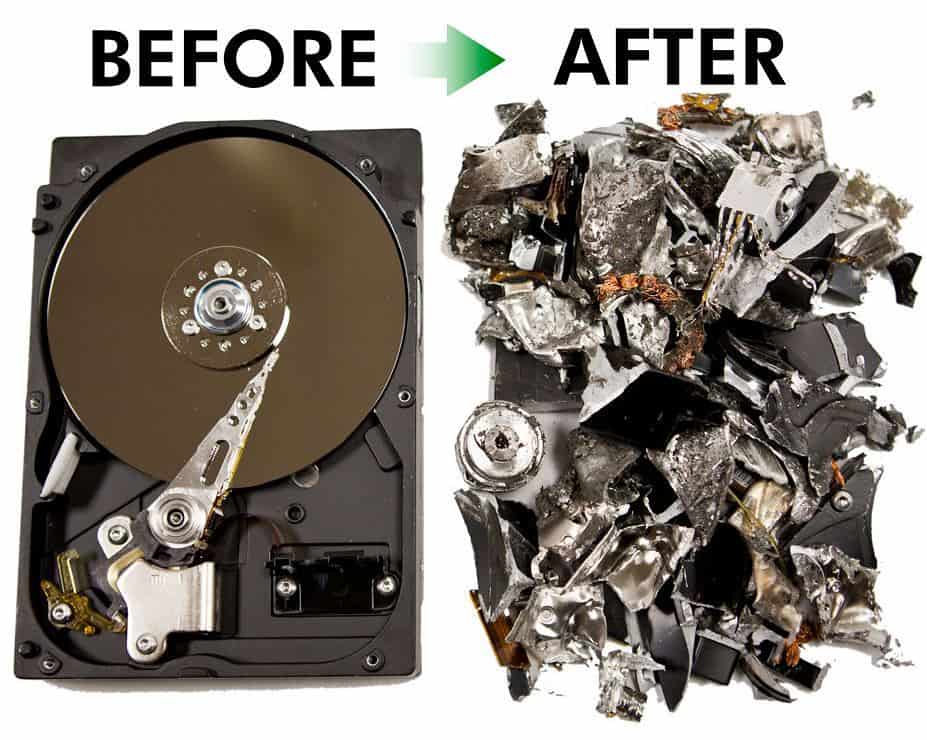Why Data Destruction is a Crucial Part of Comprehensive Cyber Security
Why Data Destruction is a Crucial Part of Comprehensive Cyber Security
Blog Article
The Value of Effective Data Destruction Practices in Safeguarding Sensitive Info and Ensuring Computer System Safety And Security
In a period where data violations are significantly typical, the importance of efficient data destruction techniques can not be overemphasized. Executing durable information damage approaches not just minimizes these threats however likewise straightens with legal conformity demands, ensuring that companies maintain their online reputation and foster client depend on.
Comprehending Data Destruction
Recognizing data damage is essential in today's electronic landscape, where delicate info can easily be compromised. Efficient data damage involves not just erasing data yet ensuring that information is irretrievable with extensive techniques. This procedure is important for companies that manage private customer details, copyright, or interior files, as any breach can lead to severe monetary and reputational consequences.
Data damage incorporates numerous methods, including shredding physical media, degaussing magnetic storage gadgets, and employing software-based remedies that overwrite information numerous times. Each technique serves a specific function and has to align with the sensitivity of the info being dealt with. As an example, physical damage is frequently chosen for disk drives having highly private data, while software methods might be adequate for less sensitive information.
Moreover, adhering to industry standards and guidelines, such as the General Data Security Policy (GDPR) or the Medical Insurance Mobility and Responsibility Act (HIPAA), is crucial for compliance and to minimize lawful risks. Organizations needs to create a robust information devastation plan, train employees on finest techniques, and regularly audit their treatments to guarantee that all sensitive info is thrown away securely and effectively.
Risks of Inadequate Practices
Insufficient data devastation methods reveal organizations to substantial threats that can have far-ranging repercussions. When sensitive information is not appropriately thrown away, it stays at risk to unauthorized access, which can cause information breaches and identification burglary. Such cases not just endanger the security of people yet likewise stain the organization's credibility, leading to a loss of client trust and possible economic consequences.
Additionally, governing compliance is significantly strict in lots of markets. Failure to stick to data devastation regulations can lead to large penalties and lawsuits against organizations. These charges can draw away and stress monetary sources focus from core business operations.
Furthermore, the abuse of recurring information can lead to intellectual residential property theft or corporate espionage, endangering competitive benefits (data destruction). The effect of poor information devastation extends beyond immediate financial losses; it can also result in long-lasting damage to brand integrity and market setting

Organizations have to identify that information safety and security is not entirely regarding protecting against violations; it additionally encompasses the responsible management of data throughout its lifecycle. Disregarding effective data damage methods can have tragic ramifications, highlighting the requirement for durable actions to minimize these risks.
Finest Practices for Data Damage
Executing reliable information destruction techniques is essential for protecting sensitive info and preserving conformity with regulative requirements. Organizations must embrace a multi-faceted method to make sure that data is irretrievable, consequently avoiding unauthorized access and possible violations.
First, information ought to be categorized based on sensitivity, permitting companies to use ideal damage methods customized to the degree of danger. For electronic information, using software-based data-wiping tools that abide by sector criteria can efficiently overwrite existing information. Physical devastation techniques, such as shredding or degaussing, are important for devices that save delicate info, making certain Continue complete obliteration.
Establishing a clear information retention policy is essential, detailing the length of time different sorts of information ought to be preserved before devastation. Regular audits of data storage space systems are also needed to identify unneeded or outdated information requiring removal.
Moreover, training staff members on the significance of information devastation and the particular methods to follow fosters a culture of safety within the company. Lastly, keeping documents of data destruction processes gives accountability and supports conformity with inner plans and external guidelines. By adhering to these best techniques, click to investigate companies can dramatically alleviate the threats related to data exposure.
Legal and Conformity Considerations

Failure to adhere to these policies can result in serious penalties, consisting of significant fines and reputational damages. Organizations must implement a robust data damage plan that straightens with these legal frameworks and provides clear guidelines on the proper approaches of data disposal, whether physical shredding or electronic cleaning.
Additionally, keeping paperwork of information destruction activities is important for demonstrating compliance during audits or inspections. By focusing on lawful and compliance considerations, companies can boost their data protection position and foster trust fund with stakeholders and clients, ultimately contributing to a more secure data administration atmosphere.
Benefits of Effective Information Devastation
Reliable data destruction techniques extend beyond mere conformity; they provide considerable benefits to companies that prioritize them. By ensuring that sensitive details is irretrievably damaged, companies minimize the risk of data breaches and the potential financial repercussions related to them. This positive technique not only safeguards against unauthorized access yet likewise improves the overall reliability of the organization in the eyes of clients and stakeholders.
Implementing robust data devastation methods, such as physical destruction of storage space tools or innovative data cleaning techniques, contributes to the strengthening of an organization's cybersecurity stance. data destruction. It minimizes the chance of intellectual building burglary and secures exclusive information, thereby keeping an affordable edge in the marketplace
Final Thought
To conclude, efficient data destruction practices are essential for protecting delicate information and improving general computer safety and security. By executing thorough techniques such as shredding, degaussing, and software program overwriting, organizations can minimize the risks linked with unauthorized accessibility and information violations. Adherence to governing requirements, consisting of GDPR and HIPAA, further strengthens compliance and protects against legal effects. Inevitably, a commitment to durable data destruction approaches cultivates a culture of duty, thereby strengthening an organization's cybersecurity stance and preserving client trust.

Report this page